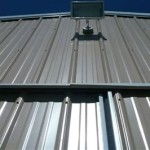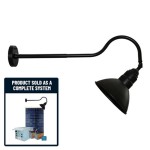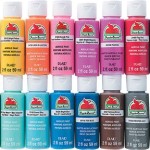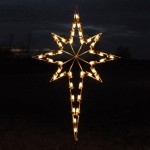How to Build a Long Range Outdoor HDTV Antenna
In an era where streaming services dominate, the allure of free over-the-air television remains compelling. While many may associate antennas with rabbit ears and grainy reception, modern technology offers an alternative: long-range outdoor HDTV antennas. These antennas can capture signals from far-off broadcast towers, providing access to a diverse range of channels without the need for monthly subscription fees. Building your own long-range antenna can be a rewarding endeavor, allowing you to customize your setup and potentially improve reception. This article will guide you through the process, covering key components, construction techniques, and essential considerations for optimal performance.
Understanding Antenna Basics
Before embarking on construction, it's crucial to understand the fundamentals of antenna design. Long-range antennas typically employ a "Yagi" configuration, consisting of several elements: a driven element, a reflector, and directors. The driven element is the main component that receives the signal, the reflector amplifies it, and the directors enhance reception from a specific direction. The length and spacing of these elements are critical for optimal signal capture within a particular frequency range (UHF or VHF).
A key aspect of antenna performance is its gain. This metric measures the strength of the signal received by the antenna, expressed in decibels (dB). Higher gain antennas typically have more elements and are better at capturing weak signals from distant towers. However, a trade-off exists: higher gain antennas exhibit a narrower reception pattern, meaning they are more directional. Additionally, the type of antenna element itself plays a role. Folded dipole antennas are often used for VHF, due to their lower profile and better performance at those lower frequencies. For UHF signals, the popular "bow tie" antenna is a strong contender. It's compact and can be readily built.
Assembling Your Long-Range Antenna
Now, let's delve into the construction process. You'll need several key components:
- Aluminum Tubing: This forms the backbone of the antenna, supporting the elements. Seek tubing with a diameter of 1/2 inch (for VHF) or 3/8 inch (for UHF) to ensure adequate strength and rigidity.
- Aluminum Rods: These form the individual elements of the antenna, including the driven element, reflector, and directors. Rods with a diameter of 1/4 inch are suitable for most antennas.
- Coaxial Cable: This transmits the received signal from the antenna to the TV. RG-6 coaxial cable offers excellent performance and is readily available.
- Connectors: A F-type connector is used to connect the coaxial cable to the antenna, while another F-type connector is needed to attach the cable to the TV.
-
Balun:
This component helps match the impedance of the coaxial cable to the antenna, preventing signal loss. - Tools: A saw, a drill, a measuring tape, wire cutters, wire strippers, and a soldering iron will be required for construction.
Once you have the necessary materials, you can begin assembling your antenna. The specific dimensions for the elements are dependent on whether you're constructing a VHF or UHF antenna. Detailed plans and diagrams are easily found online, with many sites dedicated to antenna construction. Follow these plans carefully, ensuring accurate measurements and precise spacing of the elements.
After assembling the antenna, it's essential to connect the coaxial cable to the driven element. This is typically accomplished through a balun, which helps prevent signal loss and improves the overall performance of the antenna. Secure the cable to the antenna using cable ties or other fasteners, ensuring a sturdy connection.
Optimizing Antenna Performance
Once your antenna is built, optimizing its performance is crucial. Here are some key steps:
1. Antenna Placement:
Location is paramount. The antenna should be placed in an open area, unobstructed by trees, buildings, or other objects. Higher placement is often beneficial, as it allows the antenna to receive signals from a greater distance. Mount the antenna on a roof, attic, or high pole for optimal results.
2. Antenna Direction:
A key step is directionality. To pinpoint the direction of the strongest signal, utilize an antenna signal meter. Rotate the antenna slowly, observing the signal strength readings. The direction where the meter registers the highest readings is the optimal direction for your antenna.
3. Antenna Maintenance:
Over time, environmental factors like weather can affect antenna performance. Regular inspections are recommended. Check for any loose connections, corrosion, or damage to the elements. Clean the antenna periodically to ensure optimal signal reception.
Building a long-range outdoor HDTV antenna can be a DIY project that yields a rewarding outcome. With proper planning, careful construction, and meticulous optimization, you can enjoy a reliable and cost-effective way to access free over-the-air television. Remember, resources abound online, offering detailed guides on antenna design, construction, and performance optimization.

How To Build A Hdtv Antenna With These Plans Mike S Tech Blog Wb8erj

Build A Hdtv Antenna With These Plans An Diy Tv Hd

How To Make A Hdtv Antenna 8 Steps With Pictures Wikihow

How To Build A Homemade Hdtv Antenna Lanevids Dad Reviews

How To Make A Digital Tv Antenna Complete Detailed Instructions

Pin By Phil On Woodworking Plans Diy Tv Antenna Long Range Hdtv

How To Make A Hdtv Antenna 8 Steps With Pictures Wikihow

How To Build A Hdtv Antenna With These Plans Mike S Tech Blog Wb8erj

Diy Tv Antennas Antenna

The Best Tv Antennas For Rural Areas In 2024 Popular Science
Related Posts







